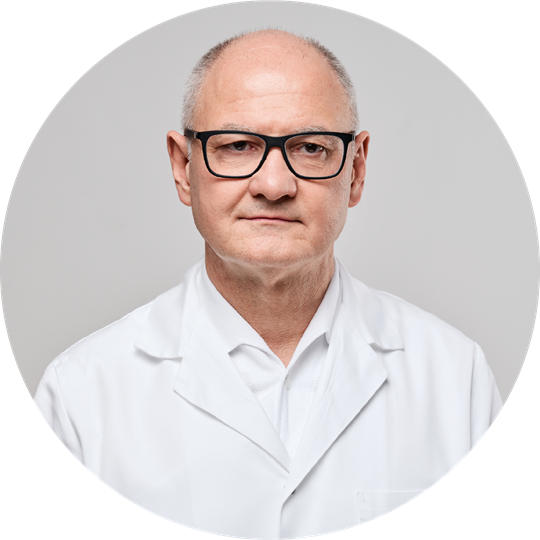Modes of Transmission


Thank you for your participation in the online symposium "Looking back and ahead - Past and future challenges in infection prevention" on 15 June 2023. We hope to have given you exciting insights into this relevant topic.
In the following you find:
If there are any questions or you want to share feedback with us, please feel free to contact us.
Looking back: The COVID-19 pandemic as a chance - impact on today's infection prevention
Head of Hospital Hygiene Department - Institute of Medical Microbiology, Virology and Hygiene at the University Medical Center Hamburg-Eppendorf (UKE), Hamburg, Germany
Topic: Lessons learned from the pandemic - Experiences of a tertiary care hospital in Germany
(PDF | 3.33 MB)

Recording of the presentation I Prof. Dr. med. Johannes K.-M. Knobloch
Director of Infection Prevention and Control, Guy’s and St. Thomas’ NHS Foundation Trust | Honorary Senior Lecturer in the National Institute for Health Research Health Protection Research Unit (NIHR HPRU) in Healthcare Associated Infections and Antimicrobial Resistance at Imperial College London, UK
Topic: Are we talking the same language? The importance of choosing our words carefully when communicating HCAI and AMR
(PDF I 2.58 MB)

Recording of the presentation I Dr. Jon Otter
Scientific Lead for Clean Hospitals | Infection Control Program & WHO Collaborating Centre on Infection Prevention and Control and Antimicrobial Resistance, Geneva, Switzerland
Topic: The Clean Hospitals Project: How can we improve environmental hygiene on a global level?
(PDF I 7.11 MB)

Recording of the presentation I Dr. Alexandra Peters
Looking ahead: Future challenges in infection prevention

Head of Institute for Pathology, Microbiology and Infection Diagnostics, Krankenhaus der Barmherzigen Schwestern Ried | Physician responsible for hygiene management, Austria
Topic: We Don't Need No Automation: The Power of AI in Surveillance of HAIs
(PDF I 2.43 MB)
Recording of presentation I Dr. Milo Halabi

Expert and networker focused on sustainability in the healthcare sector | Founder and managing director of ZUKE* Green
(*Zukunft Krankenhaus-Einkauf, Future of Hospital Purchasing), Erkelenz, Germany
Topic: Sustainability - Best-Practice Sharing "That's how you can do it!”
(PDF I 5.66 MB)
Recording of presentation I Stefan Krojer

Senior Scientist Formulation Development & Risk Manager, HARTMANN SCIENCE CENTER, BODE Chemie GmbH, a company of the HARTMANN Group, Hamburg, Germany
Topic: First steps towards sustainable disinfection
(PDF I 845 KB)
Recording of presentation I Dr. Jan Schröder
What's your opinion and policy on glove disinfection?
Non-sterile disposable gloves are single-use products which, by definition, can only be used on a single patient. The disinfection of gloves can be useful in the care of a patient if the gloves cannot be changed and there is an indication for hand disinfection. It should be noted that the tear resistance of some gloves is reduced as long as alcohol-based hand disinfectants have not dried off completely.
Has someone complained about the reduced use of gloves?
The decision to reduce the wearing of gloves was the decision of a central commission. In order to avoid complaints, the wearing of gloves was not prohibited, but through training we have made it possible to reduce the wearing times. This has been positively received by the majority. Since it was still possible for employees with concerns to wear gloves continuously in isolation rooms if they wished, there were no complaints.
What type of gloves to be used, rubber gloves or hand care gloves?
As long as no toxic or skin damaging substances are handled, we prefer non-sterile disposable gloves, as rubber gloves may contain allergens.
Is it ok to use alcohol hand rubs to disinfect our hands and wear gloves also?
The use of gloves has the aim to protect the hands from gross contamination. Therefore, hand disinfection and glove use should be applied in accordance with the particular indication and depending on the respective activity.
You banned the ear-loops for respirators, is this just for FFP2 or also for normal masks?
We have removed from the range only respirators (FFP2) models with ear loops. Medical masks outside surgical areas can still be used with ear loops. Tied surgical masks are used in surgical areas. You can find an open access detailed review about the tight fit of respirators here.
Is it always necessary to disinfect the hands before wearing gloves?
Yes, hands must be disinfected before each use of gloves. This avoids contaminating gloves when removing them from the packaging with multiple gloves and avoids contaminating the outside of the gloves during donning.
Every moment in the 5 Moments of hand hygiene also indicate a change of gloves. But if ABHR is used in all 5 moments, do we still need to use gloves?
In my view, the use of gloves can be reduced to a necessary minimum of application. Gloves are still useful in avoiding contamination with large amounts of potentially infectious material, as high levels of a biological load can also reduce the effectiveness of hand disinfection. Furthermore, the use of gloves is necessary wherever direct skin contact may pose a risk to medical personnel.
Do you think that the importance given to "transmission by surfaces" in the pandemic is a factor that influences the abuse of gloves nowadays in healthcare?
During the pandemic, many people created their own views of what constitutes "good infection prevention". Many studies show that self-protection measures tended to be better adhered to by medical staff, while measures for the exclusive protection of patients tended to be less frequently applied. Since gloves provide a sense of security for many people, the belief that they must protect themselves from harmful contaminated surfaces may have contributed to increased misuse of gloves. However, we have not conducted extensive scientific research on this topic ourselves.
Have you also looked what the best way is in How to communicate - through written, talked or diverse media?
The key here is to know your audience. It’s no good trying to communicate with an audience in a medium that isn’t right for them. So, the right medium will depend on the audience.
Do you think that we, as clinicians or epidemiologists, should be responsible for communication to the public, or leave that part to experts?
We should involve experts in communication (because this is a profession in its own right) and work in partnership with them, to develop an expertly developed and professional communicated message.
If you have to write a short document for a "multidrug resistant microorganism COLONIZED patient" (not infected yet), to inform the patient about the contact precaution that patient/family has to maintain, which information should be in the text?
I wouldn’t reinvent the wheel here. There’s a lot of good and well-written information for patients in the public domain. See, for example, this for CRO: https://www.journalofhospitalinfection.com/action/showPdf?pii=S0195-6701%2815%2900320-5
Do you think a marketing specialist should be apart in your IPC team?
No, I don’t think there’s quite enough for a full-time marketing specialist. However, IPC experts with experience in marketing would be welcome in my team!
What was your experience during the pandemic regarding surface disinfection and what were your learnings?
My experience was that there was a major spike in interest concerning surface disinfection; in some cases a disproportionate one. Even though we knew quite early on that SARS-CoV-2 was quite an easy virus to kill, we saw people using very strong disinfectants in ways that were suboptimal at best and dangerous at worst. We saw streets, beaches, (and in some cases people) being sprayed with disinfectant even though there was no indication to do so. That said, the spike in interest also had a number of positive effects. People became far more aware of how fomit etransmission works, and there has been an exponential increase in studies that concern surface disinfection in the healthcare environment.
Has Clean Hospitals Project tied up with any corporate company or private hospital in India?
Currently we do not have any industry members from India yet, but we would love to have them! For hospitals we are happy to send you a link to our Healthcare Environmental Hygiene Self-Assessment Framework (HEHSAF), and can keep you informed as we develop more materials for healthcare facilities.
Do you know about a specific solution to disinfect the DRAINS? (for example: if you find a Klebsiella pneumoniae OXA-48 in the drain of a sink, could you eliminate it in a permanent way?)
The question of drains is a very challenging one, and there is a great deal of research being done in this area currently. Generally, there is no perfect system to keep the biofilms in drains from coming back once removed. There have been a number of studies looking at different chemical/ heat disinfection procedures. Others have looked at regularly replacing the sink traps, changing the designs of sinks to reduce splashing, or removing the sinks entirely. I would say that whatever method you use, the most important aspect is continued monitoring and maintenance of the issue.
Should we disinfect hospitals or instead try to make a good microbiome in the environment?
Currently yes, the literature concludes that there are a number of indications where is it appropriate to disinfect parts of the hospital environment. In hospitals, there are specific environments where high risk patients must not come in contact with any pathogenic microorganisms, even those that generally wouldn’t be an issue for people with normal immune systems. That said, there is beginning to be a lot of research about using probiotics in the environment, but we still need more peer-reviewed literature on this. In the future, if controlling the hospital microbiome end up being as promising as some think it will be, then I would imagine that there will be certain parts of the hospital environment (though not all) that could be maintained through ensuring a good microbiome in the environment.
Have you already noticed an impact in your facility? Reduced antibiotic usage, reduces HAI?
Yes, our Infection-Control-Team indeed looks every day on the cases, goes back to wards and in the case of “pending information” we even had the chance to intervene in the other case. Also the focus of the management is on the project and the issue HAI changed, compared to “no focus” before we started with HAIDI.
In the light of artificial intelligence, does HAIDI learn and improve over time? Can you still see your trends in infection in time?
HAIDI is – to my knowledge - an algorithm that combines information from the HIS and builds a time line of events, leading to the suggestion, if a case is a HAI or not. I´m not aware of further developments of the company so far, but things are changing rapidly.
And can you benchmark between hospitals?
Not so far, because we are the only hospital, but once all or most of the healthcare institutions take part benchmarking will be possible.
What were the obstacles when establishing HAIDI? Resistance from the hospital management?
Two obstacles: Persuading the management of the hospital to dare to invest in HAIDI and then “billions” of meetings (online) concerning interface issues and datasecurity items in the first place. Vinzenz Gruppe has a very strict policy concerning datasecurity.
Does HAIDI work in different languages?
Yes: English, german, Czech and Slovakian language. But I am sure, datlowe (the company) is open for new languages.
We are still depending on the registration of individual HCW. Aren't you 'afraid' of the saying 'garbage in, garbage out‘?
Up to now we also were depending on HCWs enthusiasm to call or name HAIs. But HAIDI gives us the glance behind the scenes to independently see, what is going on in wards or out-patient-areas. Of course, you may get 30 suggestions and you will “give out” 5 patients, so 25 were “no matches”, but as you saw during my presentation, it won´t take too long to go through the patients, so: yes, maybe some garbage in, but more output compared to what was the scene before we had HAIDI.
Are the HAIs measured on an ICU also the problem of the ICU? Or can it also be the problem on a ward or OR, getting out of hand and results in an ICU admission?
Once a patient from ICU is on the suggested list, you have to follow the “track” where the infection took place. We know from our data, that the “real” ICU-infections by the majority take place outside ICU.
You said that alcohols, QACs, and oxidants all have their disadvantage. Which disinfectant should I then use?
The right choice of disinfectant must be made especially regarding the efficacy spectrum and device compatibility. With this decision one should keep in mind, the disadvantages of the product categories and check the viability of the choice made.
Disinfectants based on oxidants decompose to oxygen and water. Aren't these the most sustainable active substances?
Only the active substance hydrogen peroxide itself decomposes into oxygen and water. Any further components of the disinfectant, which example change for example surface-spreading-properties or the pH-value, do not decompose and stay on the surface. One can say that no active substance stays on theses surfaces, but residues are still present.
You mentioned the packaging of disinfectants, which is plastic right now. How can this be more sustainable in future? Packaging from special paper?
This is part of an ongoing process of development. Packaging consisting of several polymers, which can be separated, or only one polymer material can be recycled to new packaging material. Coated paper for example, cannot easily be recycled.
For surface disinfection which one is good: Aldehyde or Aldehyde free products?
For disinfection and the material compatibility aldehydes are quite good, due to their volatility. But especially this volatility makes same more dangerous for the user. One can use aldehydes safely for disinfection in well ventilated areas or in closed machinery for automated processes.
What is your opinion on UV-C disinfection?
UV-C has disadvantages due to the limitation of any light source and the imminent thread for humans. Any shadow will lead to a not disinfected area. Further, the efficacy must be verified regarding surface material, distance, and time. The user and other people need to be safe and stay away from the lightsource to avoid skin or eye damages.

If you have any questions, please feel free to contact us.